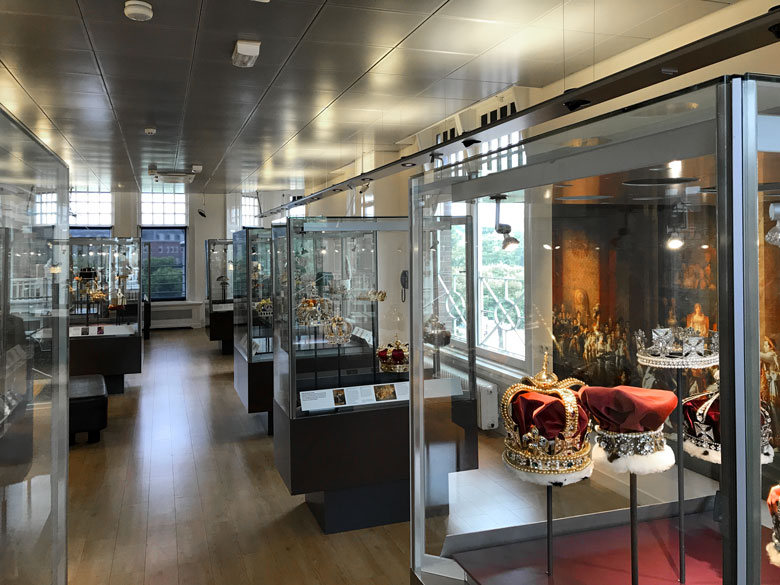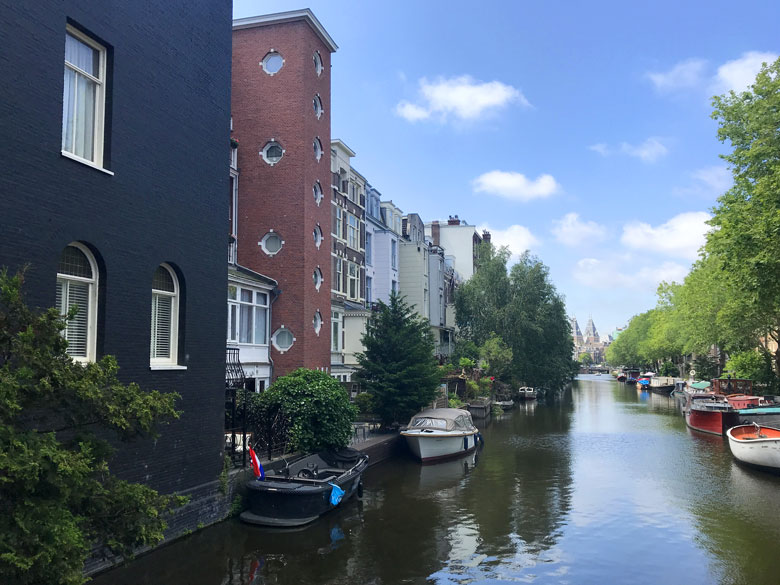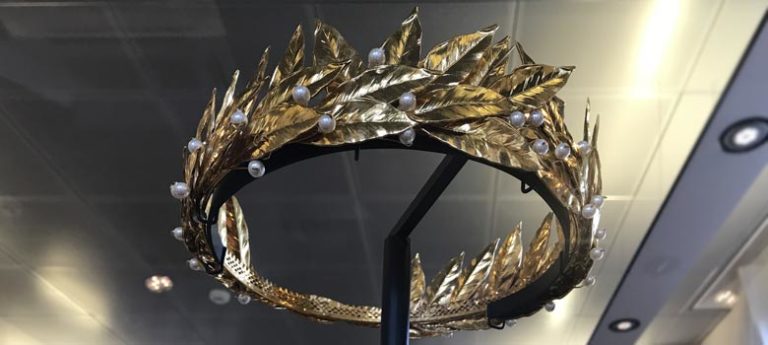Amsterdam, Netherlands: Diamond Museum
© KarmaWeather by Konbi - All rights reserved
Cover picture by Konbi (license)
History, review and travel guide about the Amsterdam Diamond Museum, the only museum in Europe dedicated to diamonds
Diamond Museum
History
Located at the Museumplein, a stone's throw from the Van Gogh Museum and the Rijksmuseum, in the heart of Amsterdam's diamond district and museum district, the Diamond Museum is one of a kind in Europe. The Coster Diamonds Museum in Amsterdam was created in 2007 for mainly educational purposes by Ben Meier, a famous Dutch diamond merchant who worked for Queen Juliana of the Netherlands. This charming little private museum, which boasts 75,000 visitors a year, is worth a visit, especially for gem and semi-precious stone enthusiasts.
Planning a visit to the Diamond Museum
Address: Diamond Museum, Paulus Potterstraat 8, 1071 CZ Amsterdam, Nederland
Website: diamonds-amsterdam.com
Phone: +31 20 305 5300
Opening hours: open 7 days a week from 9 am to 5 pm
If you wish to plan your visit in advance and use a guide, you can contact the museum staff via their website.
What is the entrance cost of the Diamond Museum?
During our visit, the ticket price was € 10 and € 7.50 for children aged 13 to 18 and adults over 65 years old. The museum is free for children aged 0 to 12 or if you have an Amsterdam museums pass (which is suggested to you on the purchase of your entrance ticket to the Diamond Museum).
Ticket prices and booking: diamonds-amsterdam.com/buy-tickets

Review of the Diamond Museum
The entrance on the ground floor is occupied by a general souvenir shop of Amsterdam memorabilia. The museum ticket is bought in the shop. Then you pass a portico and go directly to the first floor to start the tour. A bronze bust of Ben Meier, founder of the creative diamond house of the museum, greets you with a sad and austere look, face closed. Sculpted by Sylvia Willink, the work has this rare quality of being able to express and reconcile several contradictory feelings, at once tension and placidity, or else, keen curiosity with barely feigned disinterest.
The visit of the Diamond Museum begins then, in the same spirit. A succession of small rooms invites you to discover the history and the geology of the diamond, since its extraction to the jeweler's display, without forgetting its selection, transformation and numerous objects and uses. It is very well designed, the graphic design of the explanatory panels of the windows is classic and impeccable, despite the rather small typography due to extensive explanations. At this stage, the atmosphere is more pedagogic than playful, and one can feel a bit unsatisfied in terms of sensations.
Fortunately, it was only the necessary didactic reminder of the main subject of the museum, diamond, about which you can consult the official brochure of the museum by clicking here (in English).
Now it's time to go up to the second floor, where we now enter a much more interesting room, and probably the one that gives the most personality and charm to the Amsterdam Coster Diamonds Museum: some forty reproductions tiaras, crowns and other royal headgear from around the world. In their reviews on Google, many Internet users who relate their experience of the museum seem to regret that few real diamonds are exposed. In fact, it does not matter if gemstones on these crown reproductions (or elsewhere in the museum) are copies or not. The museum, and especially the room dedicated to diamonds and precious stones via the prism of royal symbols, allow to put in perspective in an original way the cultures of each continent through the ages. Indeed, the educational and cultural dimension of the visit takes precedence over the sensationalism to which the uninformed visitor could legitimately expect, such as exceptional diamonds protected by an ultra-secure armored glass.
In the crowns room, among the many examples of princely or warrior wreaths from Egypt and ancient Greece, Thailand, Malaysia, Persia, Java, Hawaii, one can admire a faithful reproduction of the laurel wreath made of gold and decorated with pearls for the coronation of Napoleon I, who crowned himself at Notre-Dame de Paris on December 2, 1804. Of the 56 original laurel leaves of the imperial crown created by goldsmith Martin-Guillaume Biennais and inspired by the crown of Julius Caesar, only two original leaves subsist today, one of which is in the Fontainebleau castle museum in France. The other surviving bay leaf, auctioned in 2017 for € 625,000, was part of one of six leaves that Napoleon had removed from the crown to lighten it before his crowning. The emperor gave these leaves to Martin-Guillaume Biennais, who at his death left one to each of his six daughters.
After this cultural and historical interlude, as flamboyant as it is colorful, the visit continues in a small black room dotted with mirrors, with in its center, protected by a glass box, a gorilla skull completely covered with diamonds, à la Damien Hirst. The staging is successful, it's bling bling at will, beautifully macabre and certainly appropriate: just after showcasing the symbols of power, vanity!
At the end of this room, no more distractions. It's time to go back to school one last time, before leaving the museum. Displays with different types of precious and semi-precious stones, how to recognize real diamonds from fake with a few button-pushing games, examples of diamond certificates. That's all folks, that is unless you want to visit, in an adjacent building, the Coster Diamonds workshops, which is included in the ticket's price. However, we did not do so because we felt, perhaps wrongly, that this option seemed more commercial than cultural and that if diamonds live forever, the opportunities to buy one must stay rare.
To conclude, the visit of the Coster Diamonds museum provides a nice interlude to the museums surrounding the Amsterdam museum district, even if the scenography seems to be primarily intended for high school students on a field trip. The possibility of using a specialized guide certainly raises the interest of the visit for adults already enlightened on the mysteries of precious stones. In any case, the crowns room, original and generous, is undoubtedly the highlight of this small charming and welcoming museum of Amsterdam.
💎 Zodiac birthstonesAlso on KarmaWeather, discover your birthstones according to your zodiac sign and your Chinese zodiac sign.

Planning a travel to Amsterdam
The capital of the Netherlands, also called the Venice of the North, is one of the most visited cities in Europe. Amsterdam is undoubtedly a cultural jewel of old Europe. The glorious tinsel of its golden age of the 17th century are still visible in the architecture of the city and its many museums. People of traders and sailors, known for their tolerance and open-mindedness, the Dutch have always managed over the centuries to exceed the limits imposed on them by a narrow geography perpetually nibbled by the sea. Holland counts among its children some of the greatest painters in the history of art, including Jan van Eyck, Hieronymus Bosch, Pieter Bruegel the Elder, Johannes Vermeer, Frans Hals the Elder, Peter Paul Rubens, Anthony van Dyck, Hans Holbein the Young, Rembrandt or Vincent van Gogh. If the Rijksmuseum and the Van Gogh Museum are Amsterdam's must-see museums, the city is full of unusual and mysterious places that deserve to be visited. Among stand out the KattenKabinet (cat cabinet) and the Tassenmuseum Hendrikje (museum of handbags and purses).
Given the crowds of visitors and the configuration of the streets and its many canals, it is best to plan a visit to Amsterdam in the fall, winter or spring, because it is a city where it is pleasant to walk or cycle without having to suffer the inconvenience of the summer heat and heat waves now almost systematic throughout Europe. Similarly, if you can focus on the days of the week rather than the weekend for your visit, your stay will be even more enjoyable, because you will avoid the majority of groups of young Europeans attracted by the vices of the famous red district of Amsterdam. This situation endures to the great chagrin of the dutch, who deplore the many nuisances that these initiatory visits cause to their daily life, which normally seems set as music paper.
Netherlands's Chinese zodiac animal sign and compatibility
Find out how compatible you are with the country you plan to visit
|
